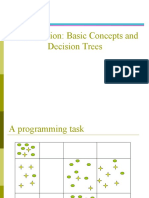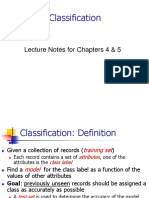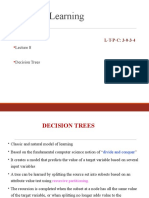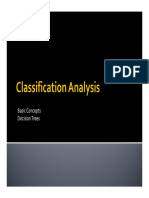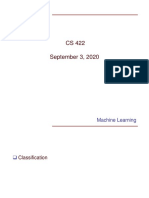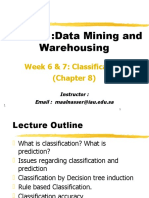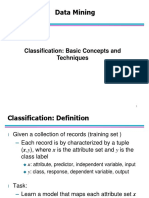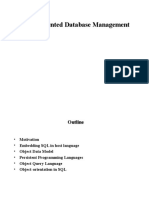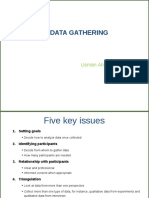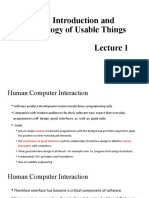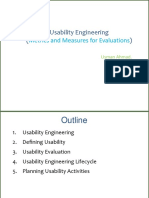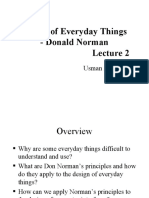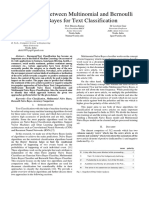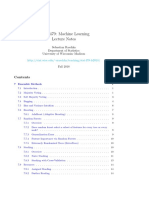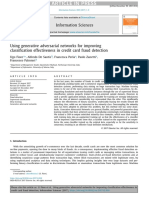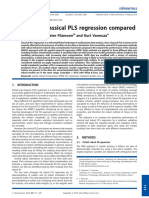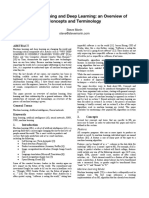0% found this document useful (0 votes)
105 views38 pagesDatamining-Lect5 Decision Tree
The document discusses data classification and prediction using decision trees and decision rules. It defines classification as building a model to predict the class of new records based on the values of their attributes. Decision trees and rules work by recursively partitioning data into mutually exclusive groups based on attribute tests, with each branch representing a rule and leaf nodes indicating class assignments. The model is built from a training set and then applied to a test set to classify new records by following paths through the tree from root to leaf nodes.
Uploaded by
black smithCopyright
© © All Rights Reserved
We take content rights seriously. If you suspect this is your content, claim it here.
Available Formats
Download as PDF, TXT or read online on Scribd
0% found this document useful (0 votes)
105 views38 pagesDatamining-Lect5 Decision Tree
The document discusses data classification and prediction using decision trees and decision rules. It defines classification as building a model to predict the class of new records based on the values of their attributes. Decision trees and rules work by recursively partitioning data into mutually exclusive groups based on attribute tests, with each branch representing a rule and leaf nodes indicating class assignments. The model is built from a training set and then applied to a test set to classify new records by following paths through the tree from root to leaf nodes.
Uploaded by
black smithCopyright
© © All Rights Reserved
We take content rights seriously. If you suspect this is your content, claim it here.
Available Formats
Download as PDF, TXT or read online on Scribd
/ 38




